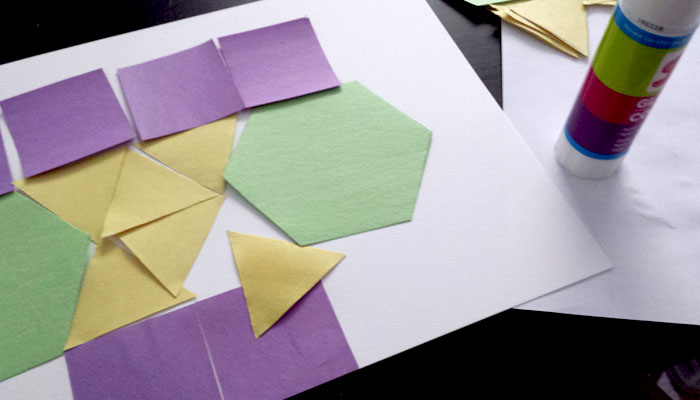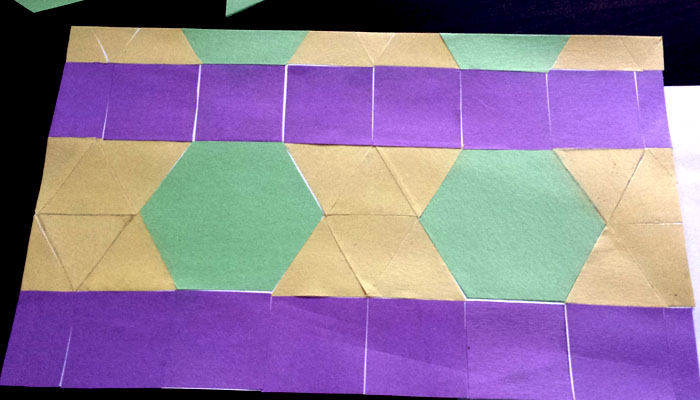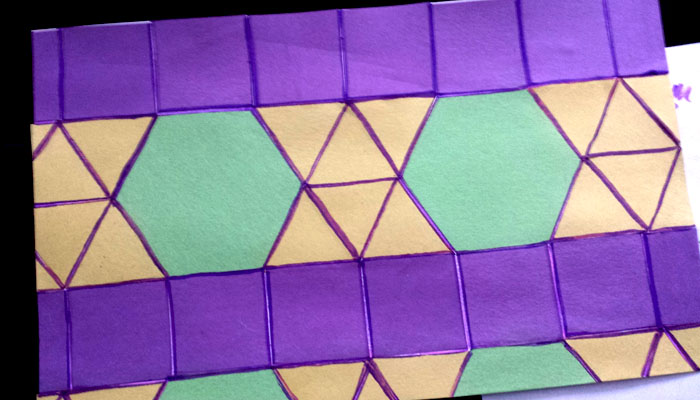Basic Geometric Patterns
GOALS
Participants will learn how basic shapes (polygons) fit and work together to create patterns and structures.
AGES: 10 – 15 (Grades / Years 6 – 10)
TIME: Adaptable (30mins – 1hour depending on how complex or large a design is)
*This activity is best practiced with a discussion or presentation on historical patterns (where do we see patterns in history and what were they used for) and their use in the world today (especially in buildings). There are many styles of pattern but one fascinating form is geometric pattern!
MATERIALS
Paper Shape Cut-Outs (construction paper), Bristol Board/Heavyweight Construction Paper, Glue Sticks
PROCESS
With pre-cut shapes – equilateral triangles, squares, pentagons and hexagons (all with sides of the same length) – participants may begin to cover their work pads (I recommend a heavy surface such as bristol board or construction paper) in creative arrangements. The challenge to this activity is that there are to be no gaps or overlaps in a design. I recommend starting in the centre of a work pad and spreading out. Participants are encouraged to experiment/plan as they design before sticking their shapes onto their work pads.
FURTHER APPLICATION: Level Adaptations and Mathematical Angles
Early Designers – use only squares and equilateral triangles.
Intermediate Designers – use all shapes but have the choice of a hexagon OR pentagon.
Experienced Designers – use all shapes, but be informed that not all shapes will work in a design (and be encouraged to think about why)!
Advanced Designers – what pattern arrangement, without gaps or overlaps, could cover a sphere, cylinder or other 3D form?
Geometric patterns are heavily reliant on angles. This activity can be used with or precede a lesson on types of angles and/or interior/exterior angles of shapes.




